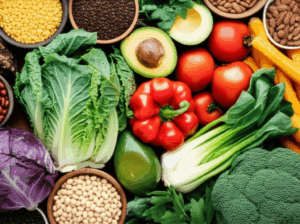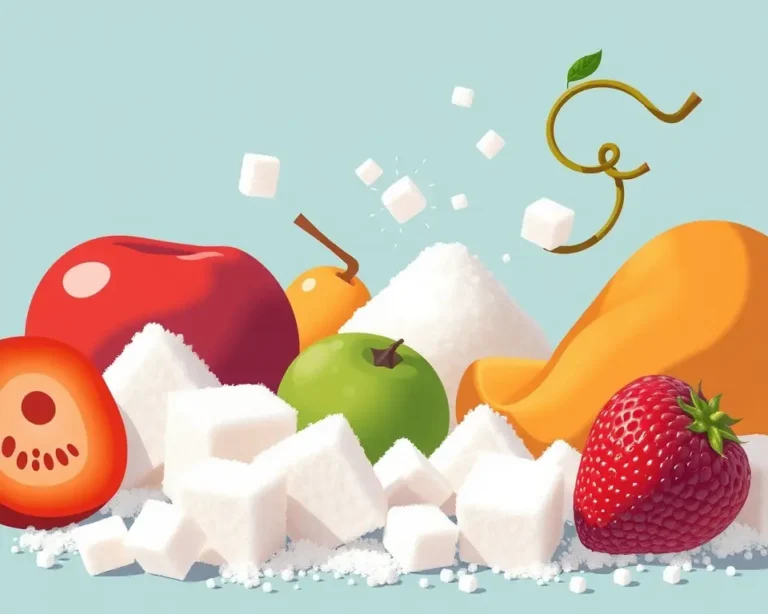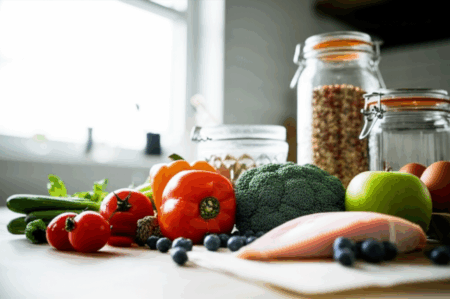It’s common knowledge that sugary treats like candy and soda should be consumed in moderation. However, many seemingly healthy foods are surprisingly high in hidden sugars, potentially derailing your health goals without you even realizing it. This article will uncover these sneaky sugar sources and provide tips for making informed choices to reduce your sugar intake.
Why is Hidden Sugar a Problem?
Excessive sugar consumption is linked to numerous health issues, including:
- Weight gain and obesity
- Increased risk of type 2 diabetes
- Heart disease
- Non-alcoholic fatty liver disease (NAFLD)
- Dental problems
The American Heart Association recommends that women limit their added sugar intake to 6 teaspoons (25 grams) per day, while men should aim for no more than 9 teaspoons (37.5 grams). Considering how prevalent hidden sugars are, exceeding these limits is easier than you might think.
9 “Healthy” Foods with Unexpectedly High Sugar Content
Here are some foods often perceived as healthy that can be significant sources of hidden sugars:
1. Low-Fat Yogurt
Yogurt can be a nutritious choice, offering probiotics and protein. However, many low-fat yogurts compensate for the lack of fat by adding sugar to enhance flavor. A single cup of low-fat yogurt can contain over 45 grams (11 teaspoons) of sugar, exceeding the daily recommended limit for both men and women.
Better Choice: Opt for plain, full-fat Greek yogurt and add your own fruit or a drizzle of honey to control the sugar content.
2. Granola and Granola Bars
Granola is often marketed as a healthy breakfast or snack option. While oats, the main ingredient in granola, are a good source of fiber, granola often contains added sugars like honey, syrups, and dried fruit. Some granola bars contain more sugar than a candy bar. A 100-gram serving of granola can contain 5-7 teaspoons of sugar and 400-500 calories.
Better Choice: Choose granola with less added sugar or make your own using rolled oats, nuts, and a small amount of natural sweetener.
3. Fruit Juice
While fruit juice contains vitamins and minerals, it also packs a significant amount of sugar. The sugar in fruit juice is primarily fructose, which the liver processes differently than glucose. This can lead to increased fat storage and insulin resistance. Some fruit juices can have as much sugar as soda.
Better Choice: Eat whole fruits instead. They provide fiber, which slows down sugar absorption and promotes satiety.
4. Dried Fruit
Dried fruit seems like a healthy snack because it provides fiber and vitamins. However, the dehydration process concentrates the natural sugars, resulting in a higher sugar content per serving compared to fresh fruit. Some dried fruits, like cranberries, are soaked in sugar before dehydration. A 30g serving of dried cranberries can contain 20g of sugar.
Better Choice: Enjoy dried fruit in moderation and choose varieties without added sugar.
5. Flavored Oatmeal
Oatmeal is a healthy and hearty breakfast choice. However, instant flavored oatmeal packets often contain a considerable amount of added sugar. One packet of Quaker Instant Oatmeal in maple and brown sugar flavor contains 12 grams of sugar.
Better Choice: Opt for plain rolled oats and add your own toppings like fresh fruit, nuts, and a sprinkle of cinnamon.
6. Energy and Protein Bars
Energy and protein bars are marketed as convenient and healthy snacks, but many are loaded with added sugars to improve taste and texture. Some bars contain more sugar than a candy bar.
Better Choice: Read the nutrition labels carefully and choose bars with lower sugar content and whole food ingredients.
7. Condiments
Condiments like ketchup, BBQ sauce, and salad dressings can be sneaky sources of added sugar. Many brands add sugar to enhance flavor. Ketchup can contain up to 4 grams of sugar per tablespoon, while BBQ sauce can contain as much as 12 grams of sugar per serving. Salad dressings, especially creamy ones, often have high sugar content to balance the acidity.
Better Choice: Choose low-sugar or sugar-free versions of your favorite condiments or make your own at home.
8. Sports Drinks
Sports drinks are designed to replenish electrolytes and energy after intense physical activity. However, they often contain high levels of sugar, which can negate the benefits of exercise. Many sports drinks contain more sugar than soda.
Better Choice: For moderate workouts, water is usually sufficient. For intense or prolonged exercise, consider electrolyte tablets or low-sugar sports drinks.
9. Canned Goods
Canned fruits, soups, and baked beans can contain added sugars. Canned fruits are often packed in syrup, while canned soups and baked beans may contain added sugar to enhance flavor.
Better Choice: Choose canned goods packed in water or with no added sugar. Rinse canned beans to remove excess sugar and sodium.
Spotting Hidden Sugars on Food Labels
Food manufacturers use various names for added sugars on ingredient lists. Here are some common terms to watch out for:
- High fructose corn syrup (HFCS)
- Sucrose
- Glucose
- Fructose
- Dextrose
- Maltose
- Corn syrup
- Agave nectar
- Honey
- Maple syrup
- Molasses
Tips for Reducing Hidden Sugar Intake
- Read Nutrition Labels: Pay close attention to the “added sugars” content on nutrition labels and the ingredient list.
- Choose Whole, Unprocessed Foods: Focus on incorporating whole, unprocessed foods like fruits, vegetables, lean proteins, and whole grains into your diet.
- Cook at Home: Preparing your own meals allows you to control the ingredients and avoid added sugars.
- Be Mindful of Serving Sizes: Even healthy foods can contribute to excess sugar intake if consumed in large quantities.
- Experiment with Natural Sweeteners: If you need to add sweetness to your food, consider using small amounts of natural sweeteners like stevia or monk fruit.
Conclusion
While these “healthy” foods can be part of a balanced diet, it’s crucial to be aware of their hidden sugar content. By reading labels, making informed choices, and preparing your own meals, you can significantly reduce your sugar intake and improve your overall health.







